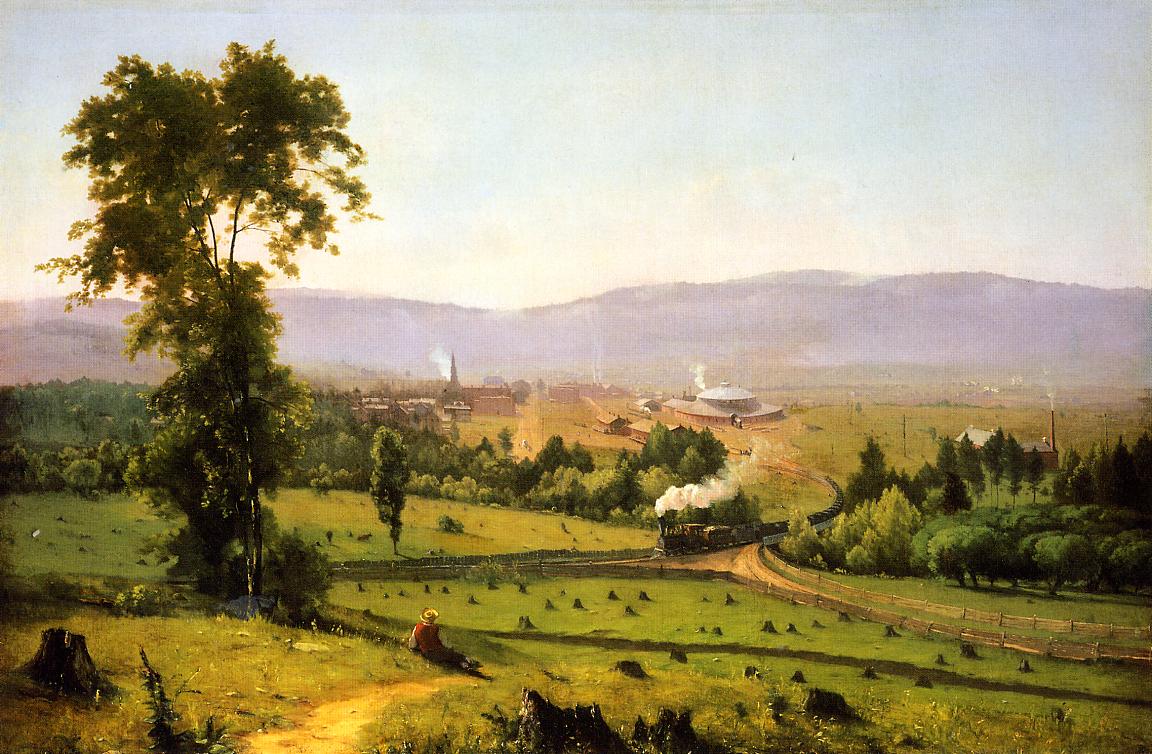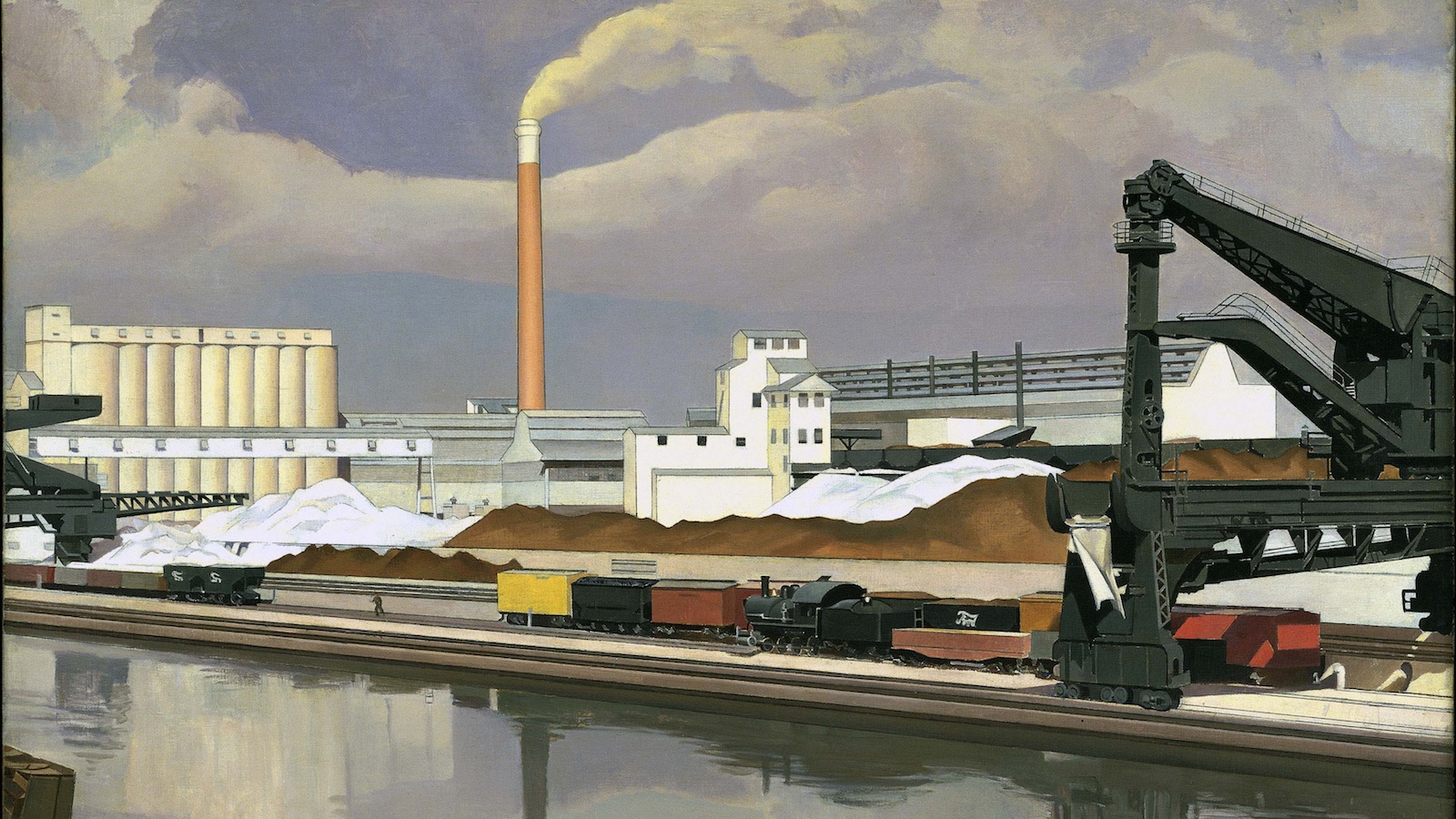Samuel Clay is a grad student in the schools of design and of engineering at Harvard. He founded NewsBlur, a personal RSS news reader, and Turn Touch, beautiful control for the smart home.
Talk to him @samuelclay.
The Machine in the Garden, written in 1964 by Leo Marx, explores the relationship between the pastoral ideal and the industrial progress that ostensibly is in opposition to that ideal. This book is not necessarily a literature review, although it enlists a half dozen full-length writings to understand the cultural symbols that encode the interplay between imagination and reality.

The urge to idealize a simple, rural environment is strong throughout the two centuries of progress that mark the industrialization of the United States from the American Revolution through until the end of World War II.
The literature that Marx introduces to illustrate the division between the two realms are masterworks that also serve as products of their times. Moby Dick by Herman Melville, Walden by Henry David Thoreau, The Tempest by William Shakespeare, Adventures of Huckleberry Finn by Mark Twain, and Ethan Brand by Nathaniel Hawthorne are instruments played in the concordant symphony of poetic realism that unites the two fronts.
At no point does Marx introduce the actual machines of the machine age to refine his point, instead preferring to rely on mid-Nineteenth century literature and art to capture the sensory images of the age.
Marx asserts that the authors of the 1800s addressed the alienation and environmental blight that accompanies that rapid industrialization that the building and deployment of the continental railroads brought with them.
The central question that Marx attempts to address is how come there is an attitude of hostility towards civilization? What is it about the products of industrialization, which bring us a miracle of goods and services that enrich our lives in innumerable ways, that provides us the impetus for abandoning them in order to reduce the technical complexity that has befallen us? What is attractive about the pastoralism that is represented by the untouched landscape, revered at Walden Pond, that is unspoiled and identified by nature as much as a rejection of the artificial world?

The romantic pastoral, a literary device embodied in the semi-primitivism of the cultivated landscape, is located chiefly by its opposition of the forces of civilization, the so-called fever of the world. It’s hard not to be taken by the opposing scene of the abstract when faced with the overwhelming force of a dehumanizing and polluting industry.
Ultimately, Marx believes that the problem presented belongs not to the artist but to politics. Thomas Jefferson, America’s third president and a departure of the friendly mercantilist policies of the Washington and Adams administration, developed his idea of a flourishing pastoral America in 1785 when he published Notes on Virginia.
Jefferson’s views on the frontiers of science color his admonition of European values, calling them “destitute of national morality.” He had witnessed the machines and factories of Europe when he lived abroad and understood that they were a harbinger of industrialized cities and their environmental consequences.
But Jefferson does not argue from a primitivist standpoint. When he writes of Native Americans and their lack of laws providing a happiness that stands in contrast to the over-regulated European condition, he is providing his affirmation of the pastoral in that he is stressing a range of possibilities unavailable to Europeans.
In America, Jefferson writes, the primitive life is a drudgery and force is law. This is in contrast to the pastoral ideal, where his countrymen would be served better to be dependent on European manufactures instead of importing the misery that accompanies the industrialization of civilization. Here Jefferson argues that American is the exception to the rule that a country should be economically self-sufficient due to its exceptional abundance of land and its accompanying natural resources.
Marx argues that Jefferson belies his pastoral vision in this moment as he is devoted to agriculture largely as a means of preserving rural virtue. In practice this meant shipping raw materials to European factories in exchange for finished cost, no matter the financial cost. But he admits that this can be economically disadvantageous and that the loss of material living standards should not be a test of a good society.
This loss is counterbalanced by the “happiness and permanence of government” that accompanies the rejection of productivity. In a dour picture of the future, Jefferson ultimately warns that if America develops its own system of manufactures then the fresh, sunlit atmosphere of the countryside will be replaced by dark, foul air characteristic of European cities.
Curbing the economic developments of manufacturing would require the kind of governmental power that Jefferson abhorred. This contradiction, seemingly founded in a fondness for the agrarian lifestyle, would be antithetical to how the pastoral ideal would flourish.
This ambivalence is a response to the conflicting demands of industrial society and the young country. As Alexis de Tocqueville notes, the wilderness was precious not for its current state of peace and happiness but for what could be made of it.
Tench Coxe, who was notable for serving under both Hamilton as the Assistant Secret of the Treasury and then under Jefferson as purveyor of public supplies, also wrote on the economic effects of manufacturing in his Report on Manufactures. Coxe had the foresight to see beyond Jefferson’s vision. Coxe believed that machines bring out the powers latent in the environment. For example, textile manufacturing more consistently fit in with the ideal of a natural America than of Europe.
Hamilton and Coxe foresaw this potential in establishing America’s supremacy over other nations. Hamilton endorsed a program of embracing manufacturing in order to turn the United States into a behemoth akin to a corporate entity. Coxe, who supported Hamilton, preferred a subtler means of spreading this message by using the more farsighted approach of using language coached in the pastoral ideal and not to acknowledge the wealth and power that inevitably accompanies industrialization.
Coxe writes that “unless business of this kind is carried on, certain great natural powers of the country will remain inactive and useless.” By building factories, America unlocks her potential and fulfills the narrative set forth by the founding of the country. The machine accelerates history and offers a destiny that preserves the naturalness of rural life in a way that is accessible to more people than the landscape naturally supports.

The nation rejoiced at the introduction of the locomotive, even as it provided many writers and artists an outlet for the misgivings that they had for the intrusion of the machine. There is a pervasive theme in our literature that describes the green landscape that is incurred upon by the machine.
Even the artworks that Marx selects, The Lackawanna Valley by George Inness and American Landscape by Charles Sheeler, portray an accelerated vision of the absorption of industry and progress into an American landscape.
Inness’ painting, which was commissioned by the railroad it depicts and is used as the cover of the latest printing of this book, assimilates the machinery into the landscape and seamlessly blends the artificial construct with the hills, trees, and natural terrain.
The smoke from the passing locomotive is figured with the same strokes as the puffs rising up from the church. Instead of cutting the painting into sections, the graceful curves of the train tracks delicately unify the pasture with the town. Hard edges are softened and the solitary figure is seen reclining in a relaxed position, at harmony with the scene unfolding below. Marx points out that even the animals continue to graze peacefully.
It is this narrative of the two worlds meeting harmoniously that sets the stage for the acceleration in the 20th century. The organic qualities of Inness’ painting are contrasted with the regimented lines and overwhelming abstract figures of Sheeler’s industrial landscape of Ford’s early 20th century River Rouge plant, also commissioned by the company.
There is no trace of untouched nature in this landscape. In this landscape, technological progress overwhelms the solitary figure, using the human scale to provide for an industrial scale. Marx argues that this bleak vista is softer than the reality, with the whirring clamor of the machines obscured and the surreal staging of the industrial process providing a pastoral sublimity that corroborates the scene in Inness’ work.
But do these two works show the dominant narrative that is embraced by Americans? It would serve Marx’s work well to include examples of a more Jeffersonian rejection of industrialization, if only to have it serve as a catalyst for the inevitable reaction.
Even Emerson, mentor to Thoreau and a critic of the pressures of society, welcomed the new factory system. He wrote in his journal in 1837 that the logic was clear.
Hard-pressed Yankee farmers no longer felt obliged to farm as their region provided a means of economic sustainability in manufacturing, a macroeconomic concept known as comparative advantage. The technology of the day was an auspicious sign that would advance literature as much as it would advance science.
Emerson is no industrial apologist. But he sees the paradox of industry in that cities drain the flower of youth and that to support “whatever events shall go to disgust men with cities and infuse into them the passion for country life and country pleasures” is to support machine power as the conditions of science and technology can be made to serve a rural ideal.
Emerson sees this machine power as a morally neutral force, which in and of itself can be potentially dangerous. The citizens of the town Emerson inhabits merely cope with the technology ceaselessly entering their lives.
There is a famous G. K. Chesterton quote that says “progress should mean that we are always changing the world to fit the vision, instead we are always changing the vision.” Emerson sees his fellow citizens as accommodating their lives to the standard design of houses instead of designing their houses to best fulfill the purpose of their lives.
Overall Marx’s book provides a contemplative and throughly researched thesis, even as it sinews the pastoral mythology with the intransigent progress inherent to industrial society.
However, in this book there are multiple examples of literature that do not serve to advance the theories put forth by Marx but rather feel as if they are an inconsistent chorus that mirrors the uncertainty felt by the people of the age. The yearnings for a bucolic paradise are felt in the actions of the characters in the novels that Marx presents, but, for instance, Ishmael witnessing the belly of a whale as a factory system turns an uncomfortable passage into a frustrating analogy.
In the end, this book performs a convincing job of embracing the paradox between them two competing ideals, deepening my understanding of the parallels. Could there have been better analogies to mine from 19th century literature? Even with the choices made, Marx forges a timeless trail that is evocative of the pastoral ideal he blends with the ensuing mechanization of the 19th century.